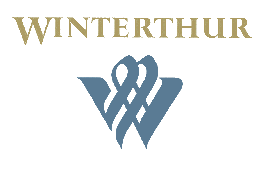|
Finding Aid to the Conrad Meyer Papers, 1814-1881 Col. 171 Winterthur, DE 19735
|
 |
|
|
Table of contents
|
|
Added entries
Subjects
Advertising cards - Pennsylvania - Philadelphia.
Advertising.
Conrad Meyer & Sons.
Exhibitions.
German Americans - Social life and customs.
Great Exhibition (1851: London, England)
Meyer, C. E. (Charles E.)
Meyer, Isaac Reed.
Musical instruments industry.
Piano - Catalogs, Manufacturers'.
Piano makers - Pennsylvania - Philadelphia.
Prang, Louis, 1824-1909.
Genre terms
Citizenship papers.
Handbills.
Letters.
Passports.
Photoprints.
Trade cards.
Trade catalogs.
Functions and occupations
Piano makers.
|
|
|
.1. Family birth record, 1793-1805. The entries include the time of birth and who suggested the name for the child. There are nine children mentioned; three of
the entries are crossed through. The document is in German.
|
1793-1805.
|
Folder 1 |
|
.2. Baptist church document from a council meeting on January 26, 1813, challenging an action. It involved a member of the Reed family.
|
January 26, 1813,
|
|
.3. Hand colored illustration of a Hessian soldier in the war against Napoleon, 1814-1815. A fragment of a letter in German is on the back. The letter discusses drills, watch duty, and other aspects of camp life.
|
1814-1815.
|
|
.4. Wanderbuch, 1818-1819. The volume documents Meyer's time as an apprentice and journeyman cabinetmaker. Page 1 contains information on Meyer's physical
characteristics. Page 2 contains a signed statement by master cabinetmaker, John Meyer, indicating that Meyer had completed
his training. The rest of the book contains guild rules governing a journeyman's “Wanderjahre” and a list of the cities in
which Meyer unsuccessfully sought work. They were: Kassel, Göttingen, Einbeck, Hanover, Bremen, Hamburg, Calais, Lingen, and
Hamburg again. The volume is in German.
|
1818-1819.
|
Folder 2 |
|
.5. Meyer's citizenship/naturalization paper, October 1, 1836, Philadelphia, Pa.
|
October 1, 1836,
|
Folder 3 |
|
.6. Letter from Maria Meyer (Conrad's mother) to “My dear daughter” (Conrad's sister), Marburg, March 7, 1837. In the letter, Maria sends her love to her family and tells of an epidemic in Marburg. The letter is in German.
|
March 7, 1837.
|
Folder 4 |
|
.7. Letter from Mr. Nash to Meyer, April 23, 1843, remarking on the arrival of a piano, requesting information on ordering, and discussing business dealing with competitors.
|
April 23, 1843,
|
|
.8. Letter from J. Chickering to Meyer, November 21, 1846, discussing Meyer's reputation as an instrument maker. Leopold de Meyer pronounced Conrad Meyer's piano the best in America.
|
November 21, 1846,
|
|
.9. Letter from Martha Augusta Meyer to Meyer, April 25, 1851. In this letter, Conrad's wife reports on family activities and business operations.
|
April 25, 1851.
|
|
.10. Letter from James Lick to Meyer, December 11, 1872, about pianos and carpenters putting them together.
|
December 11, 1872,
|
|
.11. A Christmas greeting to Meyer and his wife from his workmen, 1850.
|
1850.
|
|
.13. Passport, 1851
|
1851
|
Folder 5 |
|
.21-.22. Newspaper clippings of two obituaries for Conrad Meyer, 1881.
|
1881.
|
|
.12. Circular for C. Meyer's Pianos at the National Fair in Washington, D.C.
|
Folder 6 |
|
.14. A two page manuscript copy of “Catalogue for Crystal Palace Exhibition,” describing Meyer as the inventor of the iron plate
frame.
|
|
.15. Advertisement, ca. 1851, for Conrad Meyer, Piano-forte Manufacturer.
|
ca. 1851,
|
|
.23. Trade card for Meyer & Sons, printed by L. Prang & Co., depicting flowers.
|
|
.24-.25. Two trade cards for Meyer & Sons, depicting children; Geddes Sons were the printers.
|
|
.26. Trade catalog providing information about the Meyer company, a price list, and advice on taking care of a piano, tuning it,
and unpacking it.
|
|
.16. Photograph and autograph of James Lick.
|
Folder 7 |
|
.17. Photograph of Conrad Meyer.
|
|
.18. Photograph of Martha A. Reed Meyer.
|
|
.19. Photograph of Isaac Reed Meyer.
|
|
.20. Photograph and autograph of Charles E. Meyer, his pass to the Exposition Universelle de 1878.
|
1878.
|